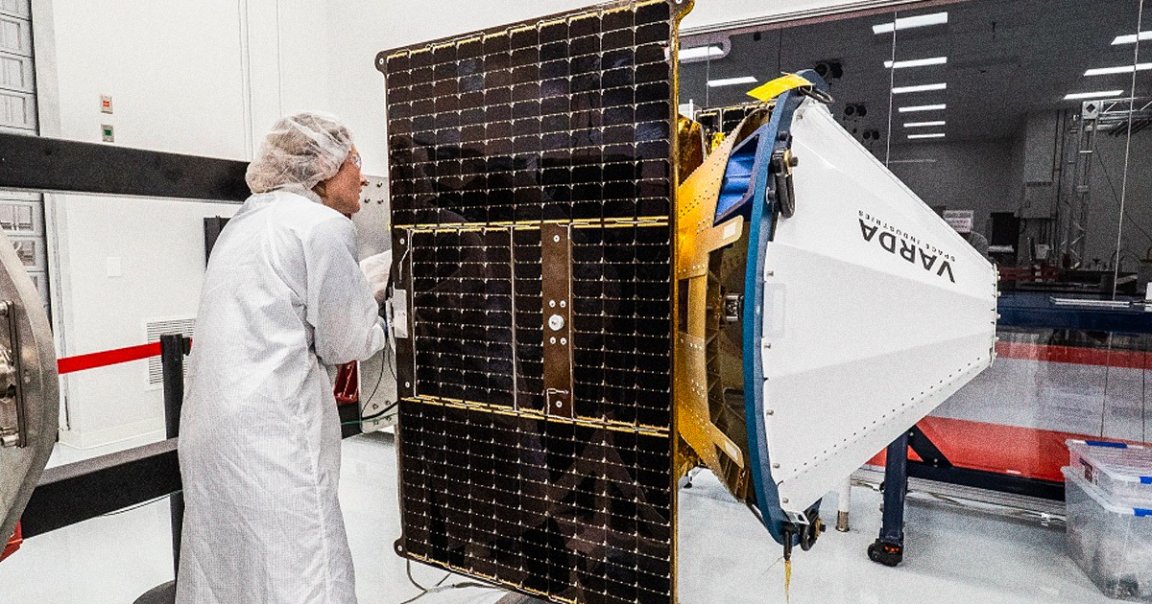
The Comedown
After eight months in orbit, with a good portion of that spent battling regulators, a spacecraft used to manufacture drugs off Earth is finally coming home — with its space-age pharmaceuticals in tow.
Developed by Varda Space Industries, the W-Series 1 spacecraft was launched in June without a finalized reentry permit. The original aim was to have the capsule, which weighs 200 pounds, return to Earth as early as the following month, spending its time in orbit synthesizing crystals used to develop medicinal drugs.
But things didn’t go as planned, and the startup struggled to obtain permission to come back from the US Federal Aviation Administration. Now, over half a year later, the FAA’s Office of Commercial Space Transportion has finally issued the reentry permit, and Varda can breathe a sigh of relief.
“We are incredibly proud to have this opportunity with our government partners, and appreciate their dedication to safe innovation in the United States,” Varda said in a statement, as quoted by TechCrunch.
Crystal Clear
Varda’s goal is to take advantage of manufacturing in microgravity conditions, which it hopes could one day be a lucrative industry.
Its mission is inspired in part by experiments conducted on the International Space Station, CNN noted, which found that the protein crystals formed in space are significantly higher quality than those made on Earth.
These crystals allow scientists to analyze the structure of a specific protein in greater detail, which in turn allows them to make a more effective drug.
For this mission, Varda’s first, the company manufactured crystals for the drug ritonavir, which is used to treat HIV/AIDS. As well as potentially heralding an era of microgravity manufacturing, it’s the first time a commercial company has been licensed by the FAA to land on US soil, Varda said in the statement.
Bumbling Bureaucracy
Varda’s capsule was launched on the SpaceX Transporter-8 mission in June. Since being deployed, it’s managed to autonomously manufacture the crystals without any significant hiccups.
Bringing it down, though, proved to be the real headache. Perhaps it was shortsighted to launch without a reentry permit in the first place, but nevertheless, a sluggish bureaucracy could also be to blame.
Part of the problem, noted IEEE Spectrum in October, was that getting permission required the cooperation of three different bodies: the US Air Force, and two offices of the FAA. Straining things further, Varda said it was the first company to apply for a reentry license under new regulations called Part 450 — so it was new territory for all parties involved,
Its application was initially denied by the FAA in September for not complying with regulatory requirements, but in October it received an encouraging go-ahead from the military, before the FAA followed suit in February.
Now with full approval, the capsule is set to land in a stretch of empty desert called the Utah Test and Training Range. After barreling through the atmosphere, the autonomous craft will deploy a parachute to slow itself down before landing on February 21.
More on spacecraft: NASA’s Launches Mission to Study Earth’s ‘Invisible Universe’